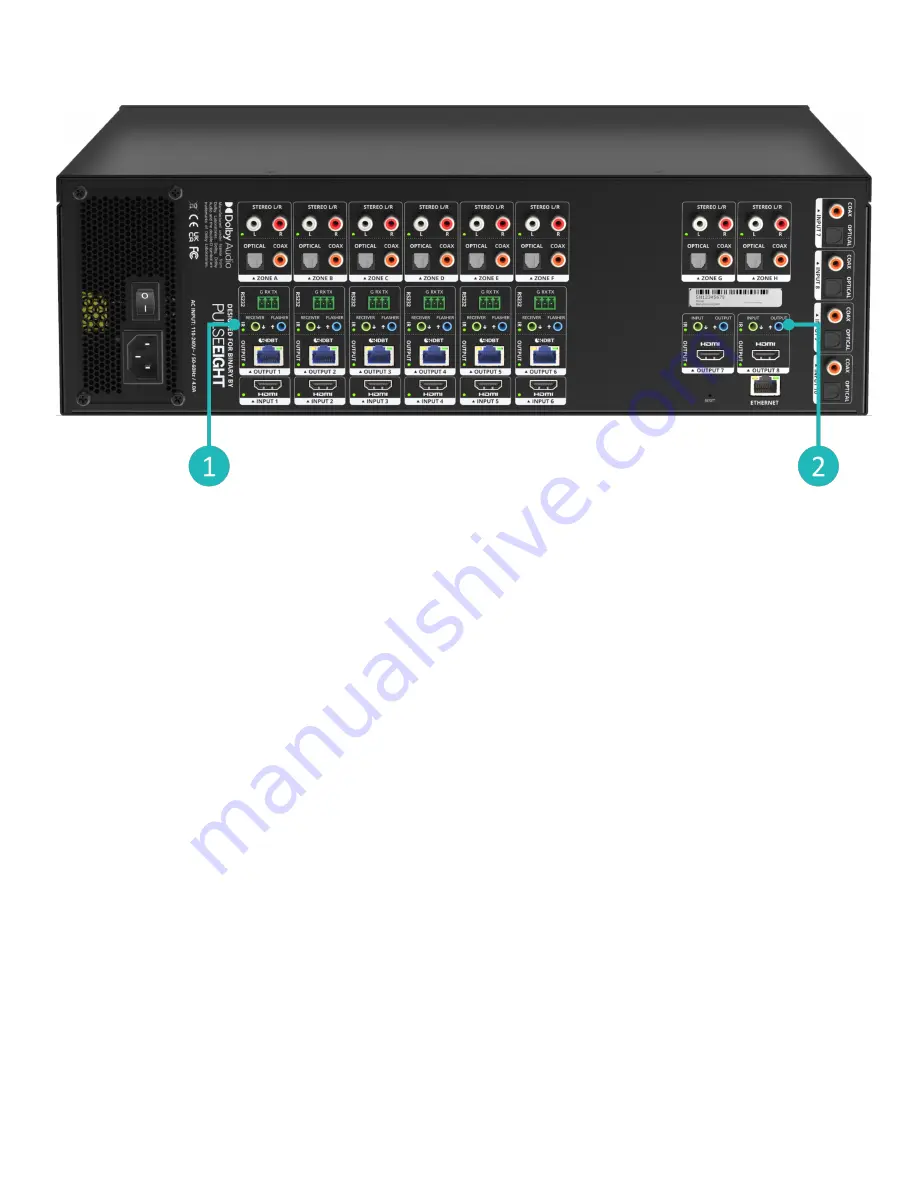
IR RECEIVER & TRANSMITTER PORTS
1. The IR ports above the HDBaseT outputs work as follows:
RECEIVER
is an IR input signal coming into the matrix that is intended to be sent to another room over
the HDBT port below it – i.e., it is a one-to-one extension from matrix to attached HDBT receiver’s IR-TX
port.
You can connect to these ports either an Episode IR Receiver or directly to a Control4 EA controller.
IMPORTANT: make sure the 12 V for the port is disabled (see web interface section) before connecting
directly to a Control4 EA controller!
FLASHER
port is an output signal connected to IR blasters controlling the sources on the rack. The
original IR signal can come from any connected HDBaseT Receiver IR input and the signal is then
routed to/blasted out the FLASHER port according to the video that you are watching – e.g., if you are
routing video from the source connected to HDMI In #2 on to display connected to HDBT out # 5, then
any IR signal received over the HDBT port #5 will be blasted out the matrix’s IR FLASHER port #2.
2. The IR ports above the HDMI outputs are a little different (hence why they are labelled differently):
INPUT
is designed to receive IR signal from an external HDBaseT set directly connected the HDMI
output. This input signal is equivalent to the IR RX on a HDBaseT receiver side. This signal will be
routed to the FLASHER port you’re watching on this HDMI output. E.g., on the neo:X+, if you are routing
video from HDMI input #1 on to HDMI output # 9, then any IR INPUT signal on output #9 will be routed to
IR FLASHER port # 1.
NOTE: If a display is connected locally (i.e., there is no extender set connected to HDMI output) then this
IR INPUT port should generally not be required in an installation.
OUTPUT
is there to support IP to IR blasting to the attached TV, if in use in the installation.
















































